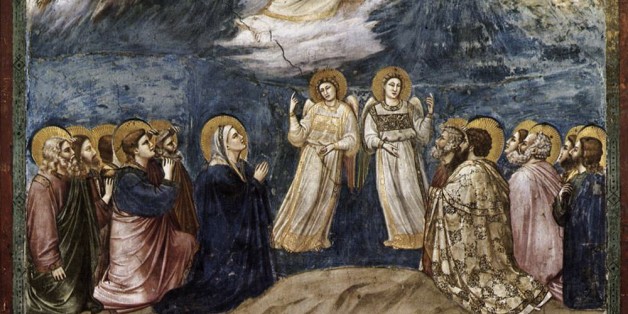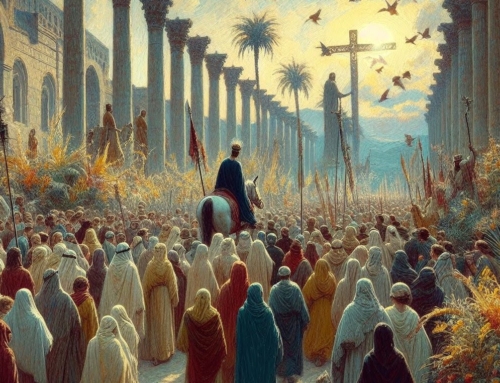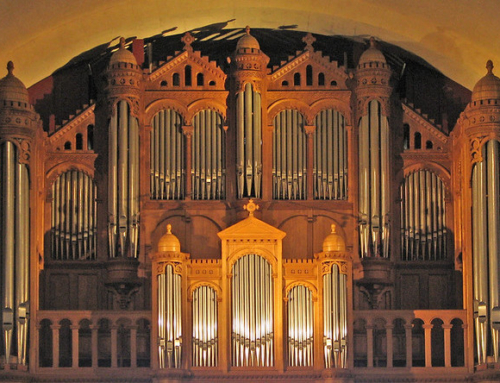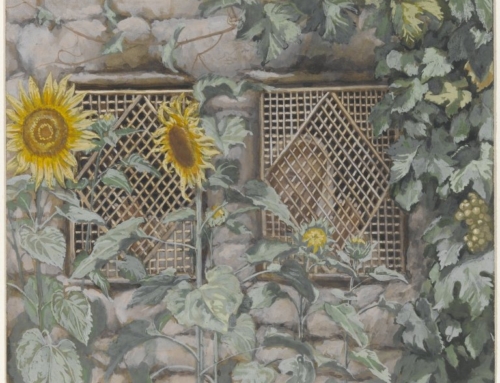In our main chapel here at the House of Studies, one of the windows depicts Saint Dominic raising a young boy from the dead. The boy, the nephew of a local prelate, had been killed falling from a horse, and, on seeing the grief occasioned by his death, Saint Dominic immediately had recourse to the sacrifice of the Mass and intercessory prayer. The window shows him slightly elevated, standing on a cloud—a frequent iconographic symbol denoting the occurrence of a miracle—and, as the boy rises to new life, he stretches out his arms toward Dominic, while a crowd of townspeople looks on.
Most often, I gaze upon this window in expectation of receiving the Eucharist at Mass, and at those times I think of Saint Dominic as standing in persona Christi, as a priest in the place of Christ; and I put myself in the position of the young lad: I am being raised from the spiritual death or sickness I have incurred because of my own sin.
The Ascension, however, has provided me with a new lens through which to contemplate this scene. The window shows Saint Dominic, with his hands raised, in a pose quite similar to many iconographic depictions of Christ ascending into heaven. This accords with the account of the Ascension in the Gospel of St. Luke: “Then he led them out as far as Bethany, raised his hands, and blessed them. As he blessed them he parted from them and was taken up to heaven. They did him homage and then returned to Jerusalem with great joy, and they were continually in the Temple praising God” (Luke 24:50-53).
I think it is key to note here the reaction of the disciples: not sorrow, but joy. And the place of their joy is significant: the Temple. In Psalm 27, we hear of a unique kind of sacrifice offered in God’s “tent,” i.e., the Temple: “. . . and I shall offer within his tent a sacrifice of joy” (Psalm 27:6). It is not simply Jesus’ Ascension, but also His promise to prepare a place for his disciples—to return and bring them with Him—that brings them such joy. Moreover, their joy is not an end in itself, but is offered as a sacrifice to God.
Before his death, St. Dominic said to his brethren, “Do not weep, my children; I shall be more useful to you where I am now going, than I have ever been in this life.” This is reminiscent of Jesus’ words in the Gospel of John: “Where I am going you cannot come.” He says this three times, first in Chapter 7, where He immediately goes on to foretell the coming of the Holy Spirit (7:34). Then, in Chapter 8, it occurs in the context of His reprimanding the Jews for their disbelief (8:21). Finally, in Chapter 13, it immediately follows His giving of the “new commandment”: “As I have loved you, so you also should love one another” (13: 34, 36). Again, in the Last Supper discourses, we can see another allusion to the saying, albeit an oblique one: “In my Father’s house there are many dwelling places. If there were not, would I have told you that I am going to prepare a place for you? And if I go and prepare a place for you, I will come back again and take you to myself, so that where I am you also may be” (John 14:2–3).
A consideration of these passages offers us several insights. First, it is the Holy Spirit that enables us to follow Christ, and, thus, fostering devotion to the Spirit and seeking His aid in every struggle will help us find our way to where Christ has gone. Second, there were many places in Jesus’ travels where He didn’t work as many miracles because of the lack of faith of the people there. If Jesus is to work the miracle of our resurrection from the dead, we must also cultivate this virtue, which the Catechism defines as “the theological virtue by which we believe in God and believe all that he has said and revealed to us, and that Holy Church proposes for our belief, because he is truth itself” (CCC 1814). Third, the Christian life requires love—not just any love, but love of neighbor and enemy for God’s sake—and this love can be a painful, self-sacrificing love. Finally, the place Christ has prepared for us in His Father’s house is also the place where the saints have gone before us. As we read in Saint Paul, “For if we believe that Jesus died and rose, so too will God, through Jesus, bring with him those who have fallen asleep. Then we . . . will be caught up together with them in the clouds to meet the Lord in the air. Thus we shall always be with the Lord” (1 Thessalonians 4:14, 17).
Just as Jesus’ ascension into Heaven leaves his disciples in a state of joy, so too should our own celebration and remembrance of His ascension fill us with rejoicing and gladness. Keeping in mind the place He is preparing for us, let us be filled with joyful hope and expectation, and live the way of charity that He has shown us. Just as the scene in the chapel window depicts the intercession of the saints and the miracle of resurrection, let us look to the saints for their perpetual help, and remember that our life does not end with the conclusion of this earthly life, but that when the Lord returns, we will join Him in His resurrection, and be taken up to live with Him forever.
✠
Image: Giotto, The Ascension







